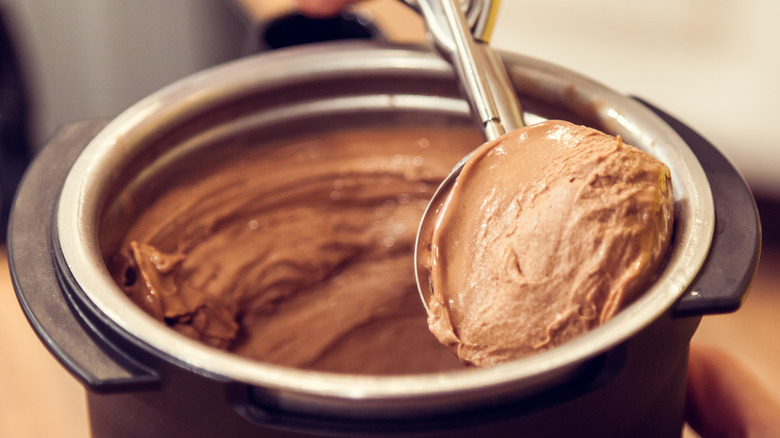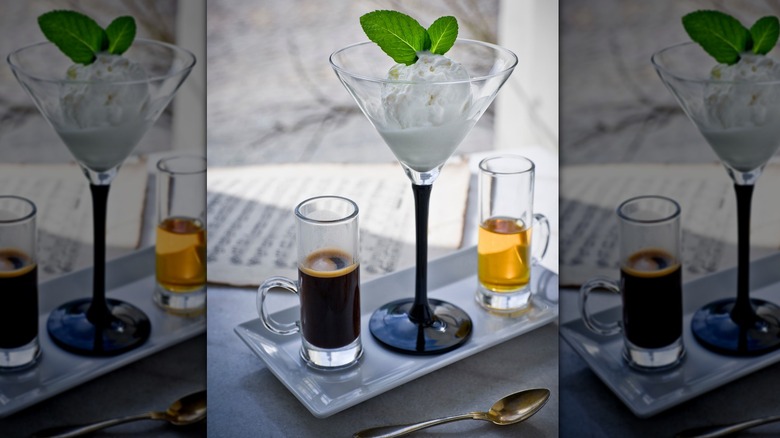The Dire Consequence Of Adding Too Much Liquor To Homemade Ice Cream
Indulging in a scoop of homemade ice cream is a delight, especially when one gets creative with flavors and ingredients. From vanilla dulce de leche to decadent chocolate swirls, the possibilities are endless. However, among other ice-cream-making errors, incorporating spirits into your frozen dessert might create a disaster rather than a delight. While a splash of liquor can enhance the flavor profile of ice cream, excessive amounts can lead to dire consequences.
The allure of adding alcohol to ice cream lies in its ability to impart unique flavors and create a smoother, creamier texture. Alcohol has a lower freezing point than water, meaning it remains liquid at colder temperatures. When mixed into ice cream, it helps prevent the formation of large ice crystals, resulting in a smoother mouthfeel. However, the key to successfully adding it lies in moderation. Pouring too much liquor into your ice cream mix can disrupt the delicate balance of ingredients and compromise the final product's texture. Worst of all, an overpour of alcohol can also prevent the ice cream from freezing correctly, resulting in a soupy consistency.
Furthermore, an abundance of alcohol may overwhelm the palate, masking any delicate flavors in the ingredients, instead creating an unpleasant boozy aftertaste. This effect is particularly true for potent spirits such as vodka, rum, or whiskey, which can overpower subtle flavors and leave behind a harsh, burning sensation.
The boozy backfire
To avoid the consequences of adding too much liquor to homemade ice cream, it's crucial to exercise restraint. Start by stirring in small amounts of alcohol and taste-testing the mixture. This technique allows you to gauge the impact of the alcohol on both flavor and texture and make adjustments accordingly. Of course, texture changes with freezing, and the taste will become more subtle too, so keep these factors in mind. Additionally, consider using spirits with complementary flavors that enhance rather than overpower the base ingredients of the ice cream.
If all this has made you fearful of adding alcohol to your ice cream, you may wonder if there are alternatives. You could infuse your cream instead, steeping the mixture with coffee beans, tea bags, or spices for non-alcoholic flavor depth. You can also plan to pair perfectly, rather than put the drink into the pud — serve your ice cream alongside a complementary liqueur or fortified wine for a sophisticated treat and one that diners can choose how much or little they want to enjoy.
Remember, experimentation is key in the kitchen, but it must be done responsibly. Enjoy your homemade ice cream, but leave excessive liquor out of the equation. When used judiciously, alcohol can elevate the taste and texture of homemade ice cream, adding depth and complexity to each scoop. However, it's essential to strike a balance to ensure the final product remains a decadent treat rather than a disappointing mishap.

